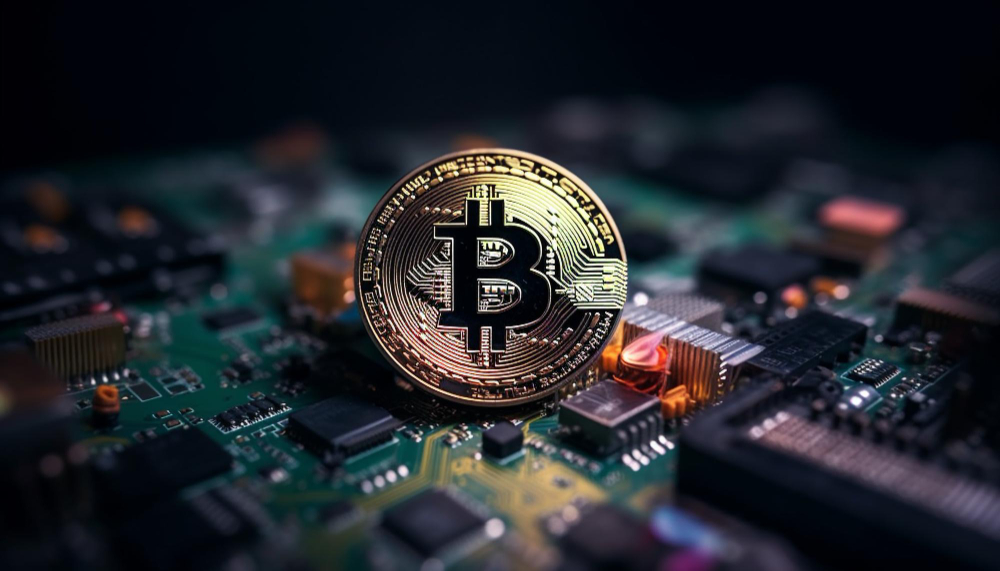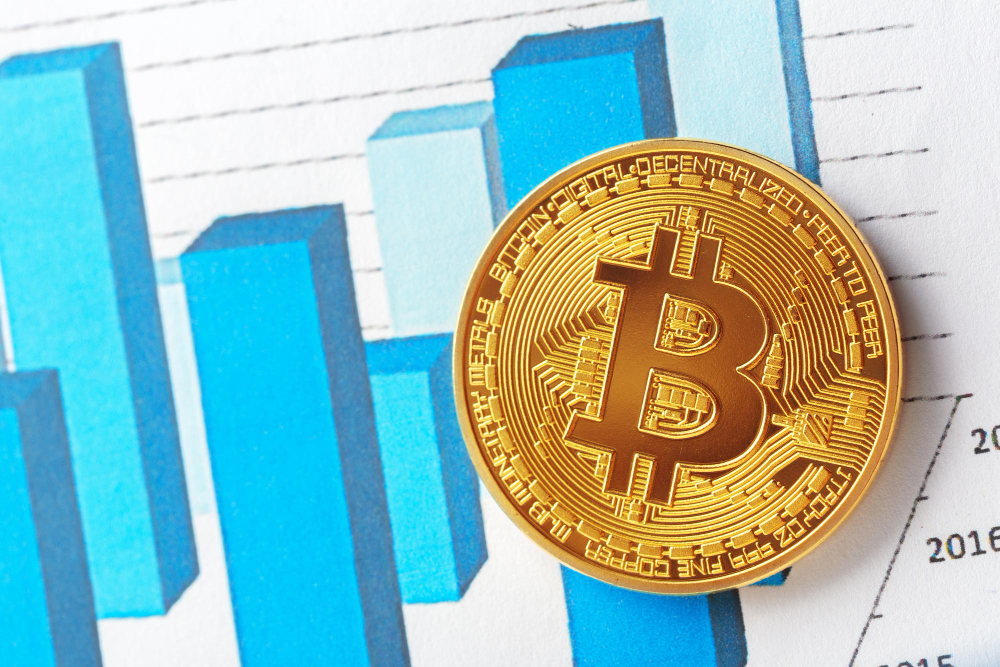Essential Bitcoin Insights: A Practical Learning Resource
- 1 The Genesis of Bitcoin
- 1.1 Who is Satoshi Nakamoto?
- 1.2 Whitepaper: Bitcoin: A Peer-to-Peer Electronic Cash System
- 1.3 The First Bitcoin Transaction
- 1.4 Bitcoin Mining and the Blockchain
- 2 Understanding Bitcoin Technology
- 2.1 Blockchain Technology Explained
- 2.2 Cryptography in Bitcoin
- 2.3 Wallets and Addresses
- 2.4 Transactions on the Bitcoin Network
- 3 Bitcoin as Digital Gold
- 3.1 Store of Value vs. Medium of Exchange
- 3.2 Bitcoin’s Limited Supply
- 3.3 Bitcoin’s Role in Portfolio Diversification
- 3.4 Historical Price Trends and Volatility
- 4 Practical Uses of Bitcoin
- 4.1 Online and Offline Payments
- 4.2 Investment and Trading
- 4.3 Remittances and Cross-Border Transactions
- 4.4 Charitable Donations and Fundraising
- 5 Risks and Challenges
- 5.1 Security Concerns and Hacks
- 5.2 Regulatory and Legal Challenges
- 5.3 Scalability Issues and Network Congestion
- 6 How to Get Started with Bitcoin
- 6.1 Buying Bitcoin: Exchanges and Marketplaces
- 6.2 Storing Bitcoin Safely
- 6.3 Exploring Further Learning Resources
- 7 Conclusion
Bitcoin, the pioneer of cryptocurrencies, has transformed the world of finance and technology since its inception in 2009. Created by the mysterious Satoshi Nakamoto, Bitcoin introduced the concept of a decentralized digital currency, sparking a revolution in the way we think about money, transactions, and the very foundations of the financial system. In this article, we will dive deep into the world of Bitcoin, decoding its history, technology, practical applications, risks, and how to get started with it. For those looking to deepen their understanding of Bitcoin investments, the Instant Advantage Ai Site offers comprehensive educational resources that can help novice and seasoned traders.
The Genesis of Bitcoin
Who is Satoshi Nakamoto?
The identity of Satoshi Nakamoto remains one of the most significant mysteries in the tech world. Nakamoto is the pseudonymous creator of Bitcoin who published the Bitcoin whitepaper titled “Bitcoin: A Peer-to-Peer Electronic Cash System” in October 2008. Despite numerous speculations, the true identity of Nakamoto remains unknown to this day.
Whitepaper: Bitcoin: A Peer-to-Peer Electronic Cash System
The Bitcoin whitepaper is a seminal document that laid the foundation for the cryptocurrency. It outlines the key concepts of Bitcoin, including the blockchain, proof-of-work, and the vision of a decentralized peer-to-peer electronic cash system. It’s a must-read for anyone looking to understand the inner workings of Bitcoin.
The First Bitcoin Transaction
On January 12, 2009, Nakamoto mined the first-ever block of the Bitcoin blockchain, known as the “genesis block.” Embedded in this block was a message: “The Times 03/Jan/2009 Chancellor on brink of second bailout for banks.” This message was a commentary on the traditional financial system’s shortcomings and signaled Bitcoin’s mission to provide an alternative.
Bitcoin Mining and the Blockchain
Bitcoin mining is the process by which new bitcoins are created and transactions are added to the blockchain. Miners use computational power to solve complex mathematical puzzles, and in return, they are rewarded with newly minted bitcoins. This process ensures the security and decentralization of the Bitcoin network.
Understanding Bitcoin Technology
Blockchain Technology Explained
At the core of Bitcoin lies blockchain technology—a distributed ledger that records all transactions across a network of computers. Each block in the blockchain contains a set of transactions, and these blocks are linked together in chronological order, forming a chain. The blockchain is public, transparent, and immutable, making it resistant to fraud and manipulation.
Cryptography in Bitcoin
Cryptography is integral to the security of Bitcoin. Public and private keys are used to secure wallets and authorize transactions. Public keys are shared openly, while private keys must be kept secret. The combination of these keys ensures the authenticity and integrity of transactions.
Wallets and Addresses
Each wallet has a unique Bitcoin address, which is a cryptographic string used to identify it on the network. Wallets can be software-based (online or mobile) or hardware-based (physical devices).
Transactions on the Bitcoin Network
Bitcoin transactions involve the transfer of bitcoins from one wallet address to another. Transaction fees are paid to miners to prioritize and process transactions quickly.
Bitcoin as Digital Gold
Store of Value vs. Medium of Exchange
Bitcoin has often been compared to gold, earning the moniker “digital gold.” Like gold, Bitcoin is seen as a store of value, but it also serves as a medium of exchange. It offers the advantages of portability, divisibility, and scarcity that traditional currencies lack.
Bitcoin’s Limited Supply
One of Bitcoin’s unique features is its capped supply of 21 million coins. This scarcity is programmed into the protocol, creating a deflationary asset. This limited supply has fueled interest from investors seeking an inflation hedge.
Bitcoin’s Role in Portfolio Diversification
Investors have increasingly looked to Bitcoin as a way to diversify their portfolios. Its relatively low correlation with traditional assets like stocks and bonds makes it an attractive addition to investment portfolios.
Historical Price Trends and Volatility
Bitcoin’s price history has been marked by extreme volatility. It has experienced rapid price increases and sharp corrections. Understanding this volatility is crucial for those considering Bitcoin as an investment.
Practical Uses of Bitcoin
Online and Offline Payments
Bitcoin can be used for a wide range of payments, both online and offline. It offers fast and low-cost transactions, making it attractive for cross-border payments and e-commerce.
Investment and Trading
Many individuals and institutions trade Bitcoin as a speculative asset. Exchanges and marketplaces facilitate buying, selling, and trading of bitcoins.
Remittances and Cross-Border Transactions
Bitcoin’s borderless nature and low transaction fees make it a compelling option for remittances and cross-border transactions, particularly in regions with limited access to traditional banking services.
Charitable Donations and Fundraising
Bitcoin has been used for charitable donations and fundraising campaigns. Its transparency and traceability make it an appealing choice for those looking to ensure their donations reach their intended recipients.
Risks and Challenges
Security Concerns and Hacks
While Bitcoin is secure, individual users must take precautions to protect their wallets and private keys. Hacks and phishing attacks have resulted in the loss of bitcoins for some users.
Regulatory and Legal Challenges
Bitcoin operates in a regulatory gray area in many countries. Government policies and regulations can impact its use and acceptance. Staying informed about local laws and compliance is essential.
Scalability Issues and Network Congestion
Bitcoin’s popularity has led to scalability issues and occasional network congestion. Solutions like the Lightning Network aim to address these challenges and improve transaction throughput.
How to Get Started with Bitcoin
Buying Bitcoin: Exchanges and Marketplaces
To acquire Bitcoin, users can buy it on cryptocurrency exchanges or peer-to-peer marketplaces. Verification and security measures vary by platform.
Storing Bitcoin Safely
Once acquired, bitcoins should be stored securely. Hardware wallets and paper wallets are popular choices for long-term storage.
Exploring Further Learning Resources
Bitcoin is a vast and evolving field. Those interested in learning more can explore online forums, books, podcasts, and courses dedicated to the subject.
Conclusion
In conclusion, Bitcoin has evolved from a whitepaper into a global phenomenon that has reshaped finance and technology. Understanding its history, technology, and practical applications is essential for anyone looking to navigate the world of cryptocurrencies. While Bitcoin offers exciting opportunities, it also comes with risks and challenges that should be approached with caution. As you embark on your journey into the world of Bitcoin, remember to stay informed, make informed decisions, and continue learning about this revolutionary digital currency.




















